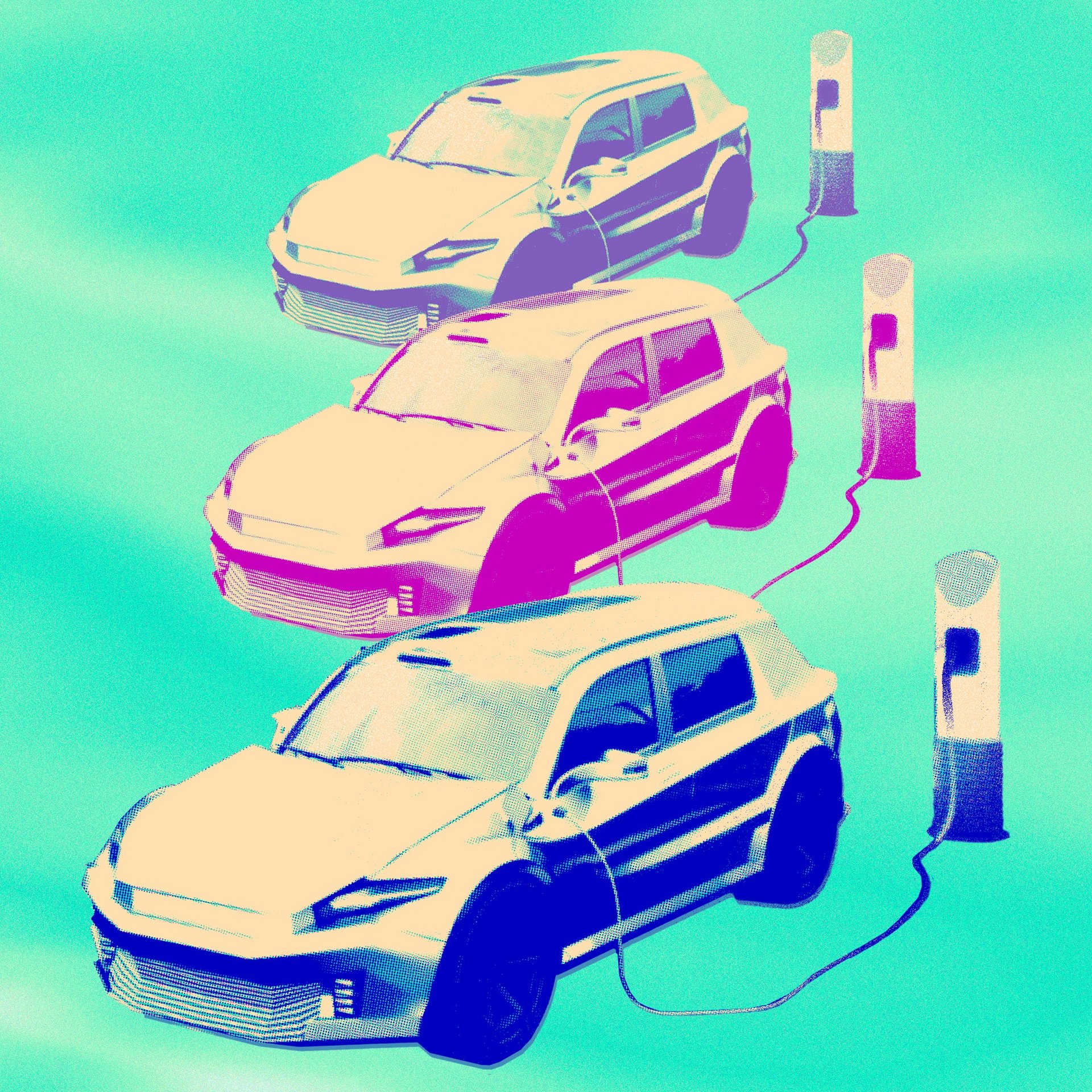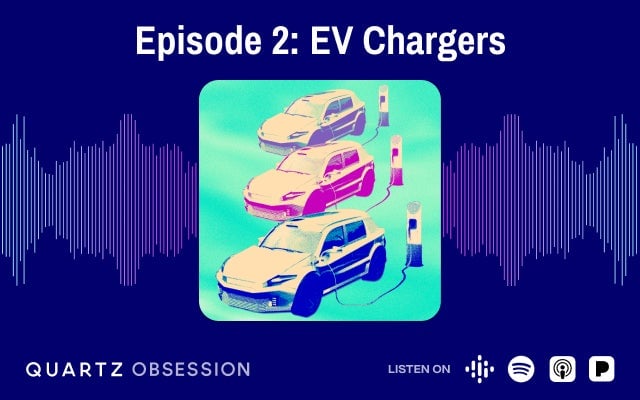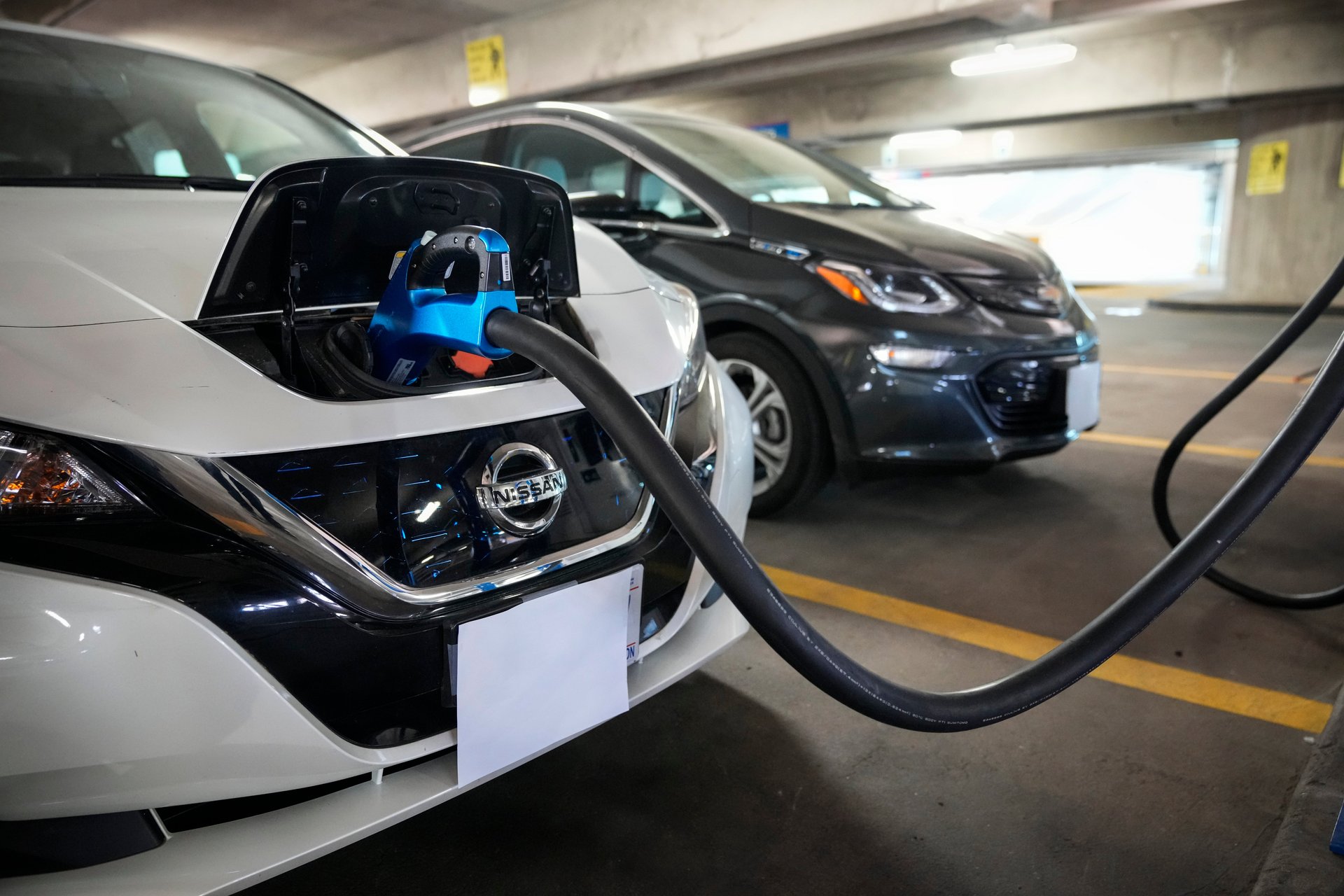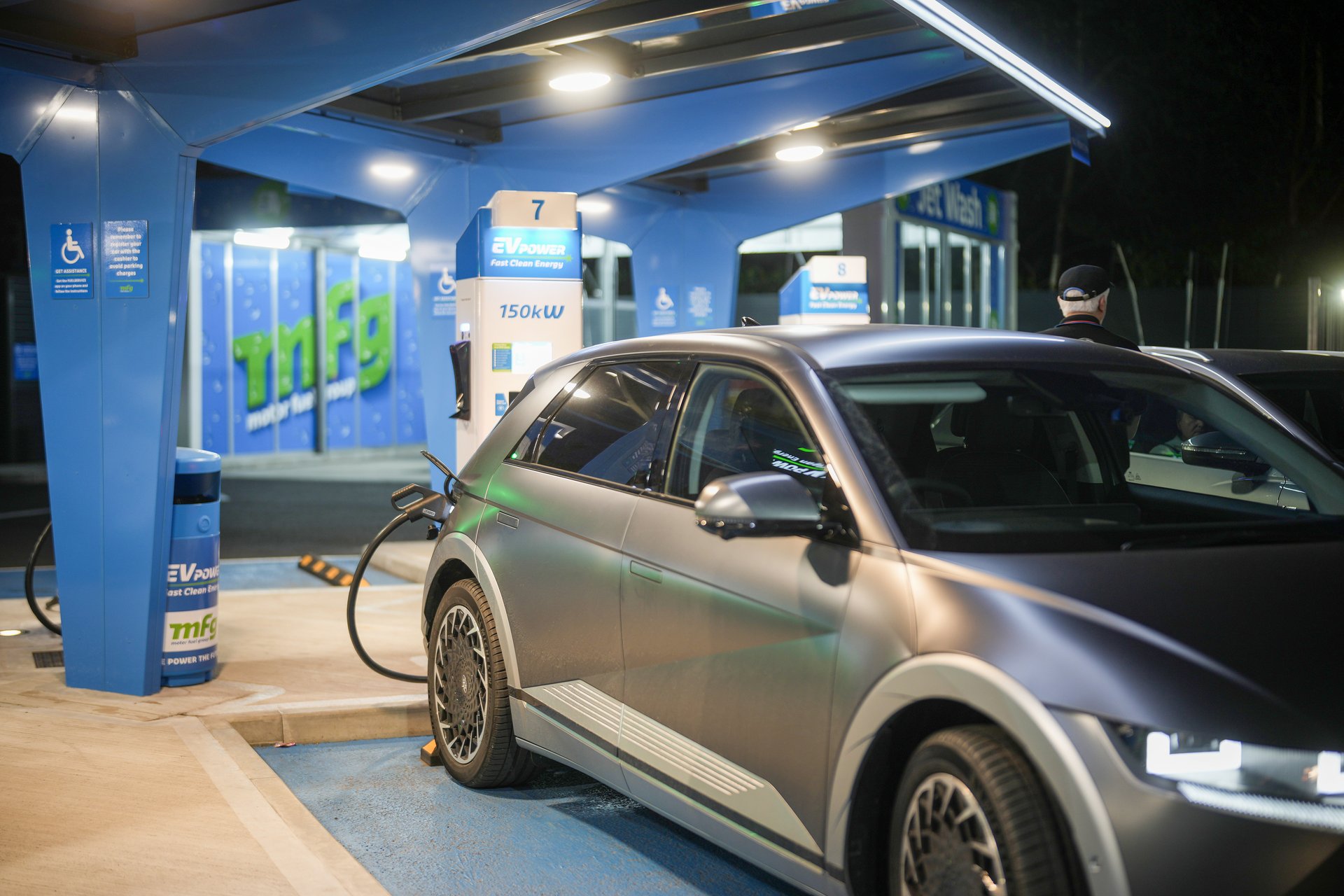EV charging: Waiting on the watt
Battling that range anxiety.

Running out of juice
Suggested Reading
The all-American road trip is as ingrained in popular culture as much as apple pie and rock-n-roll. It’s also keeping a lot of people from ditching their gas-guzzling trucks and going all-in on electric vehicles.
Related Content
Picture this: You take three, maybe four, friends out for a cross-country road trip — say, from New Jersey to Nebraska — in an EV from your carmaker of choice. After a couple of hours, you’re probably looking for somewhere to refuel — but you can’t find a charger. That’s an experience familiar to many electric car owners, whether they’re a government bigwig in a hybrid minivan or the head of one of America’s biggest car companies in an all-electric SUV.
Despite making major strides in expanding access across the country, largely thanks to efforts from companies like Tesla or EVPassport, most people are worried about finding a charger, even if they don’t expect to go on a major trip. That fear — charging anxiety — is one of the biggest things holding people back from buying an EV, especially since it’s not exactly uncommon for chargers to be broken.
Let’s ride through some of the twists and turns of EV charging. No outlets required.
By the digits
$6,000: Cash U.S. automakers lose for every $50,000 electric car they sell in America. Some lost even more, like Ford Motor’s $132,000 loss per vehicle in its first quarter.
40 hours: Minimum amount of time it takes to charge a battery electric vehicle from full to 80% using a Level 1 charger. Level 2 chargers can take between 4 and 10 hours, while fast chargers reduce that time to between 20 minutes and 1 hour.
206,800: Electric vehicle charging stations currently in operation across the U.S. and Canada.
500,000: Public electric vehicle chargers President Joe Biden has pledged to have across the U.S. by 2030.
33 million: Electric vehicles projected to be on U.S. roads by 2030 in the National Renewable Energy Laboratory’s mid-adoption forecast. The country would need 28 million charging ports to support those cars, most of which would be put into homes and workplaces.
Explain it to me like I’m five!
Burning up
Part of the problem with EV adoption is that it’s outpacing the number of chargers being built every year. More than 30,000 new public charging ports were built in the U.S. last year. That’s good — and definitely an improvement — but 1.2 million electric vehicles were sold during that same time. Plus, hundreds of chargers are scheduled to be replaced thanks to their outdated tech.
And more and more EVs will inevitably hit the road over the next few years. Why? Well, it’s because the Earth just keeps on getting warmer and warmer. Last month was the 12th straight month in a row of record temperatures. That’s the second-longest streak in recorded history. As Copernicus Climate Change Service Deputy Director Samantha Burgess explains, until the world gets its carbon emissions under control, the Earth will only get hotter, bringing with it extreme weather.
That’s a major problem, and it’s pushed most car companies to pledge to phase out the gas-powered cars of yesteryear to cut back on tailpipe emissions — even if it strains the electric grid. Jeep- and Chrysler-parent Stellantis plans to stop selling gas-powered cars in Europe by 2030 while cutting U.S. sales in half; General Motors has a 2035 deadline on ending gas-guzzler sales; Ford Motor, along with firms like Mercedes-Benz, has pledged to end gas-powered sales by 2040. It doesn’t hurt that at least 12 states will ban gas-powered car sales after 2035.
But, as with all things, there’s a silver lining. You don’t necessarily need to go find an EV charger and wait hours for a car to juice up — just install one in your home. Or, if you live in multifamily housing, try to convince whoever is in charge to do so on your behalf. According to several case studies, gathered and presented here by the federal government, adding chargers can help incentivize EV adoption and draw in environmentally-minded tenants.
Listen up!

Powering an electric car or truck is designed for people with private garages or who live in a major city with lots of accessible charging stations. Rural and suburban apartment dwellers can’t just run cords out their three-story windows to juice up their rides through a 140-volt outlet. That would take days.
If we want any shot at transitioning to greener vehicles, how can we turbo-charge access to EVs for everyone? In episode 2 of the Quartz Obsession podcast, season 8, host Rocio Fabbro gets the answers from Quartz reporter William Gavin in EV Chargers: The geographic forces driving electric vehicle adoption.
🎧 Listen on: Apple Podcasts | Spotify | Pandora
👓 Or, read the transcript
Pop quiz

The Biden administration invested $7.5 billion to build new EV charging stations two years ago. How many have been made since?
A. 8
Cruise along to the end to find the correct answer.
Brief history
1891: The first electric vehicle in the U.S. is created by William Morrison of Des Moines, Iowa, equipped with an electric motor that powered its right rear wheel and Morrison’s newly-made storage batteries.
1914: General Motors introduces the “Electrant,” a first-of-its-kind direct current (DC) charger for electric cars. A few years earlier, General Electric introduces the 6kW Wattstation, a prototype charger for electric cars.
1922: Electric car popularity slowly dies in the 1920s as prices remain higher than popular gas-powered cars. As of 1922, less than 2,000 electric cars are made annually, compared to 1.8 million cars overall in the U.S.
1990: General Motors shows off the prototype Impact electric car at the Los Angeles Auto Show and, six years later, releases the first mass-production electric car in decades, the EV1. Just over 1,000 units are produced.
2000: Toyota Motor brings electric cars back into the mainstream with the Prius, the first mass-produced hybrid.
2024: The International Energy Agency predicts that almost 1 in 5 cars in the U.S. and European Union will be electric by 2030. Seventeen million EVs are expected to be sold this year.
Fun fact!
At least two U.S. presidents — or their wives — drove an electric car during their first wave of popularity. While President Howard Taft preferred to drive his steam-powered White Model M, First Lady Helen Taft owned at least two Baker Queen Victoria electric two-seaters. Although Taft’s successor, Woodrow Wilson, never learned how to drive, both his first and second wives also used Helen Taft’s Baker electric car.
Watch this!
Cybersecurity experts explain to The Wall Street Journal just how easy it is to hack electric vehicle charging stations — and why it’s a problem for the power grid.
Poll

What’s keeping you from buying an EV? Or, if you already have one, what was your biggest concern?
- Too pricey
- Range anxiety
- Concerns over battery performance
- A lack of nearby chargers
💬 Let’s talk!
In last week’s poll on drug names, Spikevax and Skyrizi were nearly tied as the medication name you liked the most. Something about those S names.
🐤 X this!
Today’s email was written by William Gavin (would drive an AA-battery-powered car if given $20) and edited and produced by Morgan Haefner (has what-am-I-going-to-make-for-dinner anxiety).
The correct answer to the pop quiz is A., 8. In late 2021, the U.S. government dedicated $7.5 billion toward funding EV chargers, but just eight stations have opened. Most charging sites funded by the program are expected to open by 2027.